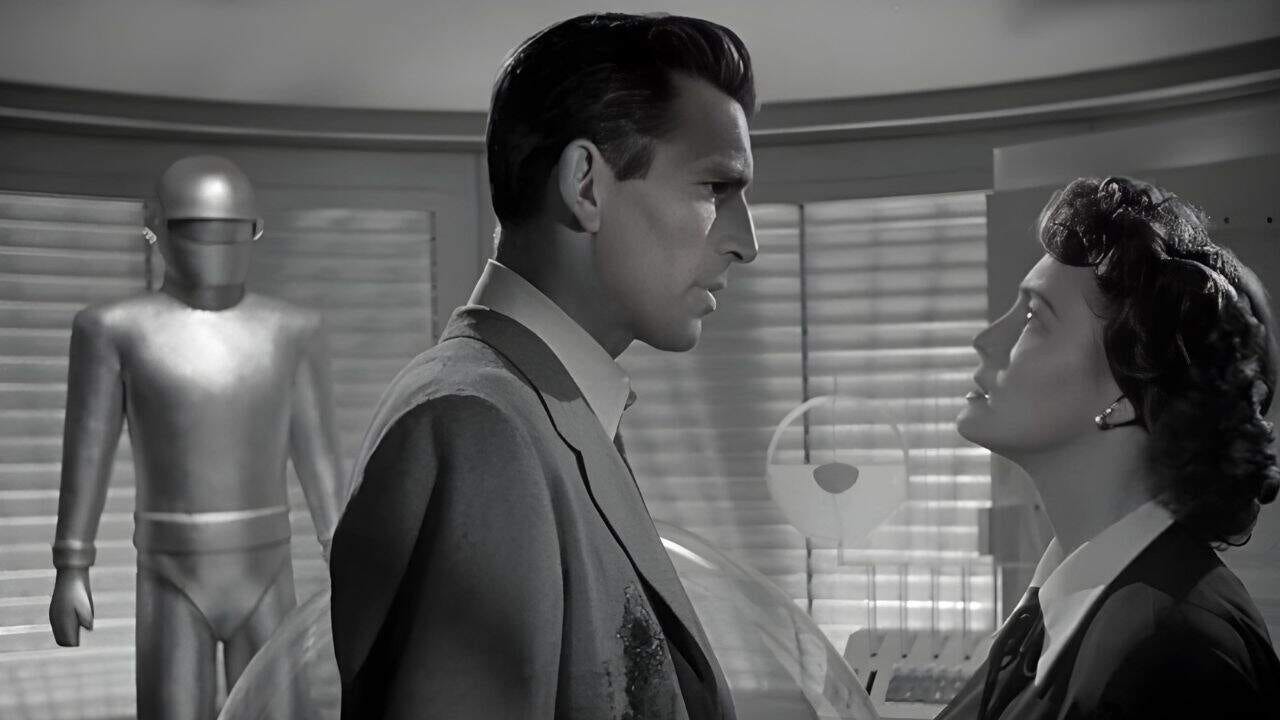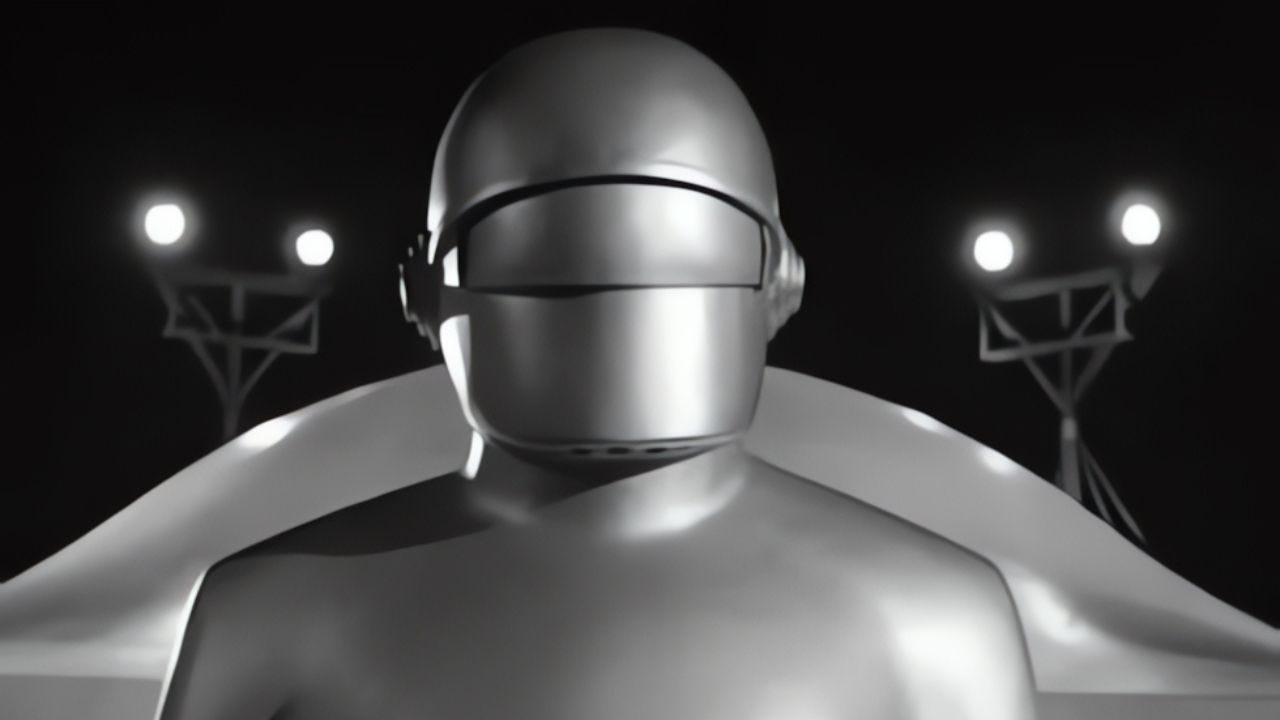The Day the Earth Stood Still (1951): A Timeless Warning in an Age of Uncertainty
Still One of the Greatest Sci-Fi Statements Ever Made
A Sci-Fi Classic That Still Echoes Today
Some films burrow into pop culture, shaping how we think about both the genre and the world itself. The Day the Earth Stood Still (1951) is one of them. Directed by Robert Wise and adapted from Harry Bates’ short story Farewell to the Master, this Cold War-era sci-fi classic isn’t just about an alien visitor and a giant robot—it's a stark warning about humanity’s self-destructive tendencies.
With Michael Rennie as the composed and enigmatic Klaatu, supported by Patricia Neal and the towering presence of Gort the robot, this movie helped define serious, politically charged science fiction before Hollywood came to rely on explosions and CGI spectacle. In an era of escalating nuclear tensions, The Day the Earth Stood Still asked something bold: would humanity recognize a warning if it came from beyond the stars?
This film mesmerized me as a kid. Even though its pacing, effects, and visuals may feel quaint compared to today’s blockbusters, the story remains gripping—perhaps more so than ever. Upon reflecting on it, I now recognize it as a timeless treasure—one that radiates not only with nostalgia but also with the strength of its message.
A Spoiler-Free Look at the Story
The film opens with a flying saucer landing in Washington, D.C. Out steps Klaatu, a humanoid alien, accompanied by Gort, a towering robot with an ominous purpose. But Klaatu isn’t here for conquest—he’s come with a warning. His civilization, more advanced than Earth’s, has noticed humanity's rapid development of nuclear weapons. If we bring our violence beyond our planet, there will be consequences.
But will world leaders listen? Or are they too preoccupied with their own fears and suspicions to recognize the greater danger they face?
Unlike many sci-fi movies of its time, this isn’t about alien invaders. It’s about us. Humanity itself is the greatest threat, and Klaatu’s mission forces us to ask whether we're capable of change.
Who might enjoy this film? If you're a fan of thoughtful, socially relevant sci-fi in the vein of Arrival (2016) or Interstellar (2014), or if you appreciate classics like Metropolis (1927), this is essential viewing.
Cinematic Brilliance and Lasting Influence
Direction & Atmosphere
Robert Wise (West Side Story, The Andromeda Strain, Star Trek: The Motion Picture) was no stranger to crafting compelling, atmospheric films. His meticulous pacing and contemplative tone give The Day the Earth Stood Still an almost documentary-like realism that makes its message even more unsettling.
The black-and-white cinematography, courtesy of Leo Tover, reinforces a sense of stark reality that modern remasters in color could never quite replicate. Light and shadow play a key role in reinforcing the movie’s themes: government officials are often framed in deep shadow, while Klaatu, the extraterrestrial outsider, is nearly always illuminated, evoking an almost messianic presence.
The Iconic Score & Sound Design
One of the film’s most identifiable elements is Bernard Herrmann’s score—one of the first to use the eerie, wobbling theremin. The electronic melody became a template for alien-themed scores for decades to come, influencing everything from Lost in Space to Doctor Who. Even without dialogue, the music alone signals that we are witnessing something eerie, something bigger than us.
Klaatu, Gort, and the Power of Understatement
Michael Rennie’s performance is vital to the film’s success. As Klaatu, he carries both an eerie otherness and a quiet wisdom, making his character feel instantly compelling without needing dramatic speeches or violent action. Instead of the usual menacing alien archetype, Klaatu is composed, deliberate, and oddly warm—qualities that make his warnings even more terrifying.

Patricia Neal, as Helen Benson, injects much-needed humanity into the story. Despite initial skepticism, her character provides one of the film’s most gripping moments during a now-iconic exchange:
Klaatu Barada Nikto.
A simple phrase, but one that became legendary in this genre, referenced in everything from Star Wars to Army of Darkness.
And, of course, there’s Gort—the silent but menacing robot enforcer. He embodies more than mere backdrop; he symbolizes the unyielding and relentless power of justice—a force that will act decisively when we are unable to save ourselves.
Why The Day the Earth Stood Still Still Matters
This isn’t just a sci-fi classic; it’s a warning wrapped in an engaging narrative. The film’s plea for humanity to abandon violence and self-destruction is as relevant today as it was during the Cold War. Whether it’s nuclear proliferation or climate change, the message remains unchanged:
Listen before it’s too late.
For decades, the best science fiction has been about more than spaceships and robots. It’s been about who we are and who we might become. This film embodies that tradition, teaching modern audiences a lesson through suspense, compelling storytelling, and restrained but effective effects.
The Verdict: A Sci-Fi Treasure Worth Watching
This is one of those films that defined my love for the sci-fi genre. While more modern audiences might find it slow in parts—with dialogue-heavy scenes and effects that feel quaint—its heart and intelligence remain undeniable.
Star Rating: ⭐⭐⭐⭐ (4/5)
Would I recommend it? Without question. But not as a popcorn flick—this is a film that demands engagement. If you love cerebral science fiction and want to see where so many of today's sci-fi ideas originated, The Day the Earth Stood Still is essential viewing.
Would I show it to someone who just wants an action-heavy alien invasion movie? Probably not. Its strength lies in its ideas, not spectacle.
Where to Stream The Day the Earth Stood Still
Looking to watch this classic? Here’s where you can stream it:
Hulu (with premium subscription)
Amazon Prime Video (rent or buy)
Apple TV+ (rent)
YouTube Movies (rent or buy)





